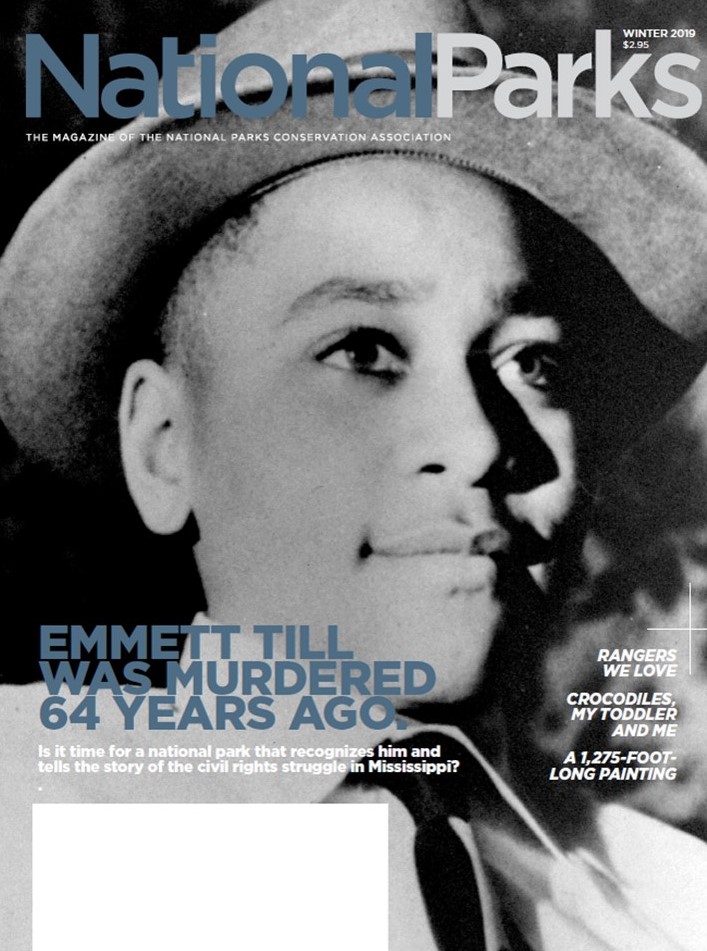
The Delta Center for Culture and Learning at Delta State University and the Mississippi Delta National Heritage Area are featured in National Parks Magazine‘s winter 2019 cover story about the development of an Emmett Till Mississippi Delta Civil Rights National Park. The article, “Mississippi Reckoning,” was penned by freelance writer Kate Siber, whose work has appeared in National Geographic Traveler and The New York Times.
Siber visited The Delta Center and communities throughout the Mississippi Delta National Heritage Area during summer 2018. Her visit to the region was inspired by the National Park Service’s Mississippi Civil Rights Sites Special Resource Study conducted in spring 2018. The study included six open-house sessions held throughout the state.
The open houses provided opportunities for Mississippi residents to discuss significant civil rights landmarks, people, and events in their communities. The civil rights heritage open house series was launched in the Mississippi Delta. The first was hosted by The Delta Center and MDNHA at Delta State University. The second was held at Tallahatchie County Courthouse where the Emmett Till murder trial occurred in 1955.
The article includes civil rights heritage stories told by Mississippi Delta residents representing various communities where local and national civil rights activists have made an impact, including Mound Bayou, Ruleville, Indianola, Renova, and Tallahatchie County.
From the article:
“The National Park Service is mandated to preserve the natural and cultural heritage of America, but currently, there are no sites in the system that protect places connected to Emmett Till—or any of Mississippi’s complicated civil rights history. That might change soon. In 2017, Congress passed legislation requiring the Park Service to undertake a study of civil rights landmarks in Mississippi. The three-year process could eventually lead to the creation of a new national park site—or several—in the state.
“But with such a rich history of both courageous activism and devastating violence, which stories will be commemorated? And who gets to tell them? I traveled to Mississippi to see some of the places under consideration and to learn about local concerns and hopes for how this history will be memorialized. Over the course of several hot August days, starting in Jackson, I drove a loop north and clockwise through the Mississippi Delta, where some of the most significant events in the civil rights movement took place.”
Read the complete article here.
National Parks Magazine is an award-winning quarterly known for high-quality photography and writing. The magazine is published by the National Parks Conservation Association (NPCA), a non-profit group dedicated to the protection and enhancement of the National Park System. According to NPCA, the magazine has a readership of more than 650,000.
The mission of The Delta Center is to promote greater understanding of Mississippi Delta culture and history and its significance to the world through education, partnerships and community engagement. The Delta Center serves as the management entity of the Mississippi Delta National Heritage Area and is the home of the International Delta Blues Project.
The Mississippi Delta National Heritage Area is a cultural heritage partnership between the people of the Mississippi Delta and the National Park Service. It includes 18 counties that contain land located in the alluvial floodplain of the Mississippi Delta: Bolivar, Carroll, Coahoma, DeSoto, Holmes, Humphreys, Issaquena, Leflore, Panola, Quitman, Sharkey, Sunflower, Tallahatchie, Tate, Tunica, Warren, Washington and Yazoo. The MDNHA was designated by U.S. Congress in 2009 and is governed by a board of directors representing agencies and organizations defined in the congressional legislation.

